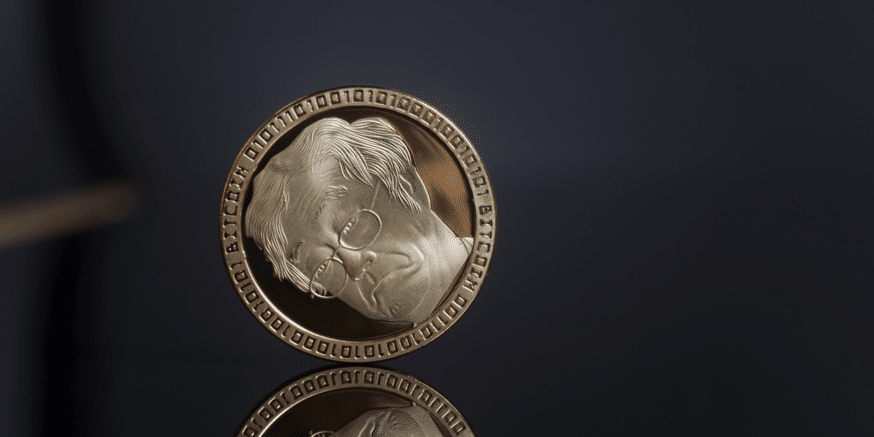Who is Satoshi Nakamoto? The identity of this individual, or group of individuals, may be the question of the century. This elusive character developed the world’s first successful cryptocurrency, Bitcoin. Nakamoto has managed to remain anonymous, despite enormous efforts by both private and governmental organizations. As you are about to learn, high-level government agencies from across the globe have been involved in hunting down Bitcoin’s mysterious creator. Let’s take a second to examine some of the techniques and government programs focused on unmasking this financial genius.
Recent Investigations
A recent investigative report conducted by Motherboard’s Daniel Oberhaus highlights the extent of these Nakamoto-based government programs. In his January report, the investigator filed a Freedom of Information Act request with both the CIA and FBI. In his petition, he asks the agencies if they know the identity of Satoshi Nakamoto and if not, what programs exist regarding this task.
Interestingly, the CIA returned the request with what is known as the Glomar response, in which the agency simply puts “We can neither confirm or deny the existence of the requested documents.” The CIA often uses the Glomar response to describe operations that are of the highest level of national security.

Why Does the US Government Care About Satoshi Nakamoto?
There are many reasons why the US government would try and track down Nakamoto. For one, Nakamoto reportedly owns over one million Bitcoin. With Bitcoin hitting a record high of around $20,000 in 2017, the elusive creator is sitting on a healthy crypto fortune. Consequently, global governmental interest in Nakamoto increased significantly.
Obama Administration Investigates
It now appears that the Obama administration had concerns about Nakamoto’s true intentions. Bitcoin experienced record growth during the Obama administration. This growth led government experts to conclude that the weaponization of Bitcoin could wreak havoc with the US’s control over the global economy by allowing countries to circumvent the US dollar altogether. These concerns also fueled fears that Bitcoin’s creator resided in a hostile nation such as China or North Korea.
At least in some part, the government’s concerns have come to fruition, albeit without the use of Bitcoin. Venezuela launched a national cryptocurrency in 2017 known as the Petro. This maneuver was done to combat the rising inflation due to crushing economic sanctions the US has imposed on the country. Russia, another country facing US sanctions, announced plans to also develop a national cryptocurrency in the coming months called the Crypto Ruble.
NSA
A blogger by the name of Alexander Muse posted some interesting findings which seem to suggest that the National Security Agency (NSA) may know who the real Satoshi Nakamoto is. According to Muse’s sources, the agency utilized advanced writing sample technology to track down the elusive Bitcoin creator.
[thrive_leads id=’5219′]
In a series of blog posts, Muse describes how the NSA used a technique known as stylometry. Stylometry examines a person’s writing style to pick out familiar terminology and sentence structure. Everybody writes in a particular manner, even Nakamoto. Nakamoto left a trail of posts and blogs regarding Bitcoin in its early days. It now appears that these breadcrumbs could have led to his discovery.
Government Programs: PRISM
Muse now believes that the NSA was able to take these early writings and compare them with trillions of other online posts. In his report, he claims that the NSA gathered all of Nakamoto’s early writings and sent them through two major government spy programs. First, the NSA used the PRISM protocol. PRISM is what federal agents use to go through Google and Yahoo accounts. The program grants these organizations the ability to view all information sent through the platforms. It’s federally approved and judicially-backed.
This secretive program came to light thanks to the efforts of now infamous whistleblower Edward Snowden. The Washington Post was the first news agency to break the PRISM story along with many other tantalizing domestic spy programs.

Government Programs: MUSCULAR
After running Nakamoto’s works through PRISM, Muse believes that the NSA then utilized their secretive MUSCULAR program to finalize their search. MUSCULAR allows the NSA to copy any data sent over the nation’s fiber optic cables. The investigative blogger cites an unnamed source that confirmed that the entire process took less than one month.
Of course, Muse’s story doesn’t reveal who Satoshi Nakamoto is. He explains that his source confirms that the NSA and CIA know the true identity of Nakamoto but are not releasing the information to the public. It may be years before any of this information becomes publicly available. Currently, the CIA and NSA declassify documents to the public after ten years if requested. The CIA automatically releases reports after twenty-five years.
Ok, So Who Is Satoshi?
As you could imagine, Muse’s investigative efforts combined with the Glomar response that Daniel Oberhaus received, helped fuel the belief that, perhaps, the US government knows who Bitcoin’s creator may be. If these organizations are privy to this information, they are not revealing this fact to the public.
NSA Results Unclear
One would think that if the NSA concluded their search and discovered that Bitcoin’s creator was from a hostile country that they would then pass that information on to the powers that be, but not the general public. As it stands now, cryptocurrencies are growing in popularity in the US and around the globe with analysts predicting future growth for years to come. While the crypto market expands, so does the curiosity surrounding Bitcoin’s creator. This rising curiosity has also led to a growing number of Bitcoin conspiracy theories in the crypto space as well.






